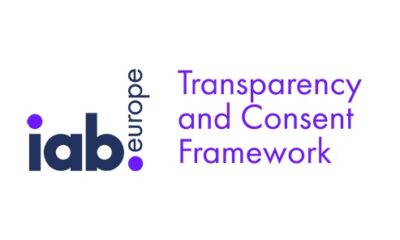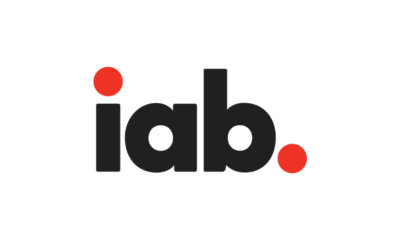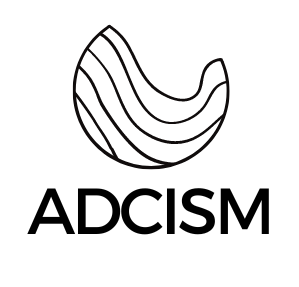Ad Tech
Prebid Version 8: Enhancing Programmatic Advertising with Advanced Features

Introduction:
In the ever-evolving landscape of programmatic advertising, staying at the forefront of technological advancements is crucial. One of the key players in this space is Prebid, an open-source header bidding solution widely used by publishers and advertisers. With the release of Prebid Version 8, a major update in the Prebid framework, the industry is set to witness a significant leap in efficiency, user experience, and revenue generation. In this article, we will explore the key features and benefits of Prebid Version 8 and its impact on programmatic advertising.
Improved Performance and Reduced Latency:
One of the primary goals of Prebid Version 8 is to optimize performance and reduce latency. With the introduction of new features like Event Emitters and the use of web workers, Prebid Version 8 enhances the overall speed and responsiveness of the bidding process. By offloading non-critical tasks to web workers, the main thread is freed up, leading to smoother user experiences and decreased page load times. This improvement is vital for maintaining user engagement and preventing ad fatigue.
Enhanced User Privacy and Consent Management:
Privacy and consent management have become increasingly important in the advertising industry. Prebid Version 8 addresses these concerns by introducing new features that enhance user privacy and comply with evolving regulations. It offers an enhanced consent management framework, allowing publishers to integrate with industry-standard consent management platforms seamlessly. With improved transparency and control over data usage, Prebid Version 8 empowers both publishers and users to navigate the privacy landscape effectively.
Support for Server-Side Header Bidding:
Prebid Version 8 brings robust support for server-side header bidding (SSHB), expanding the capabilities of the framework. SSHB allows publishers to move some of the header bidding processes from the client-side to server-side, reducing page latency and increasing scalability. With Prebid Version 8, publishers can seamlessly integrate and manage both client-side and server-side bidding strategies, maximizing their monetization potential and reaching a broader range of demand sources.
Advanced Debugging and Troubleshooting:
To simplify the process of debugging and troubleshooting, Prebid Version 8 introduces new tools and features. The updated version provides a comprehensive set of debug tools, including detailed logs and diagnostics, allowing publishers and developers to identify and resolve issues quickly. By enhancing the debugging capabilities, Prebid Version 8 streamlines the development process and minimizes revenue losses due to technical glitches.
Simplified Upgrades and Maintenance:
Upgrading to a new version of any software can be a complex process. However, Prebid Version 8 aims to simplify the upgrade process with its compatibility layer, enabling publishers to seamlessly transition from earlier versions. The compatibility layer ensures that existing implementations and configurations continue to work smoothly while gradually adopting the latest features and enhancements of Version 8. This streamlined upgrade process saves time and effort for publishers, allowing them to benefit from the new features without disrupting their existing workflows.
Conclusion:
Prebid Version 8 marks a significant milestone in the evolution of programmatic advertising. With improved performance, enhanced user privacy, support for server-side header bidding, advanced debugging tools, and simplified upgrades, Version 8 empowers publishers to optimize their revenue streams while delivering better user experiences. As the digital advertising landscape continues to evolve, Prebid Version 8 paves the way for more efficient, transparent, and privacy-focused programmatic advertising practices, benefitting publishers, advertisers, and users alike.
More information on this:
Ad Tech
What is Ad Stitching?

Ad stitching, also known as server-side ad insertion (SSAI), is a technology that allows publishers to insert ads into video content on the server-side, before the content is delivered to the viewer. This is in contrast to client-side ad insertion (CSAI), which inserts ads on the viewer’s device.
Ad stitching has a number of advantages over CSAI, including:
- Reduced ad blocking: Ad blockers typically work by blocking ads that are delivered to the viewer’s device. Since ad-stitched ads are inserted on the server-side, they are not visible to ad blockers.
- Improved performance: Ad stitching can improve the performance of video content by reducing the amount of data that needs to be transferred to the viewer’s device. This is because the ads are already stitched into the content stream, so they do not need to be downloaded separately.
- Greater control: Publishers have more control over the ad experience with ad stitching. For example, they can choose where ads are placed in the content, and they can ensure that the ads are compatible with the content.
How Does Ad Stitching Work?
The process of ad stitching typically involves the following steps:
- Prepare the content and ads: The content and ads are prepared for insertion. This may involve encoding the content and ads in a compatible format, and adding markers to the content stream to indicate where the ads should be inserted.
- Insert the ads into the content stream: The ads are inserted into the content stream at the designated locations. This is done on the server-side, before the content is delivered to the viewer.
- Deliver the stitched content to the viewer: The stitched content, which includes both the content and the ads, is delivered to the viewer.
The Benefits of Ad Stitching
Ad stitching offers a number of benefits for both publishers and viewers. For publishers, ad stitching can:
- Increase ad revenue by reducing ad blocking
- Improve the performance of video content
- Give publishers more control over the ad experience
For viewers, ad stitching can:
- Provide a more seamless viewing experience
- Reduce buffering and loading times
- Ensure that ads are relevant to the content
The Future of Ad Stitching
Ad stitching is a relatively new technology, but it is already having a significant impact on the online video advertising industry. As ad blocking continues to grow, ad stitching is likely to become even more important for publishers. In addition, ad stitching is being used for other applications, such as inserting personalized content into video streams. As ad stitching technology continues to develop, it is likely to become an even more important tool for publishers and viewers alike.
I hope this blog has been helpful. Please let me know if you have any questions.
Ad Tech
AI on Advertising

Artificial intelligence (AI) is transforming the advertising landscape in a multitude of ways, revolutionizing how brands connect with consumers and reach their target audience. AI is being leveraged to enhance creative ad production, optimize ad targeting, personalize ad experiences, and measure ad performance with unprecedented accuracy.
Creative Ad Production
AI-powered tools are being used to automate the creation of high-quality, engaging ads. For instance, AI can generate ad copy, design creative visuals, and even compose music for ads. This automation frees up the time and resources of human creatives, enabling them to focus on more strategic aspects of the advertising process.
Ad Targeting
AI algorithms are adept at analyzing vast amounts of data to identify and segment target audiences with incredible precision. This allows advertisers to deliver ads to the right people at the right time, maximizing the effectiveness of their campaigns. AI-powered targeting is particularly effective in digital advertising, where it can be used to target users based on their online behavior, demographics, and interests.
Personalized Ad Experiences
AI is enabling advertisers to provide personalized ad experiences that resonate with individual consumers. By understanding each user’s preferences and behaviors, AI can deliver ads that are relevant, timely, and engaging. Personalized ads are more likely to capture attention, drive conversions, and build customer loyalty.
Ad Performance Measurement
AI is transforming the way ad performance is measured and optimized. Advanced AI algorithms can analyze vast amounts of data in real-time to track ad performance across multiple channels and platforms. This allows advertisers to identify and optimize campaigns that are underperforming quickly and effectively, ensuring that their marketing dollars are spent wisely.
Examples of AI in Advertising
- Google’s AI-powered AdSense algorithm: This algorithm automatically generates and places ads on websites, ensuring that they are relevant to the content and target audience.
- Facebook’s AI-powered ad optimization tools: These tools use machine learning to analyze user data and optimize ad placements, budgets, and creatives for maximum impact.
- Amazon’s personalized product recommendations: AI algorithms analyze user purchasing history and browsing behavior to recommend products that are likely to be of interest.
- Snapchat’s AI-powered augmented reality filters: These filters use AI to overlay digital images and animations onto the real world, creating immersive and engaging ad experiences.
- Digiday’s AI-powered ad fraud detection: This tool uses machine learning to identify and block fraudulent ad impressions, ensuring that advertisers are not paying for non-human views.
The Future of AI in Advertising
As AI technology continues to evolve, its impact on advertising is only expected to grow. AI is poised to play an even more significant role in creating personalized, engaging, and effective advertising experiences. Advertisers who embrace AI and its capabilities will be well-positioned to succeed in the ever-changing digital marketing landscape.
Ad Tech
The Rise of MFA (Made for Advertising) Sites: A Double-Edged Sword

Introduction:
In the digital age, advertising plays a crucial role in the success of businesses. With the increasing popularity of online platforms, a new phenomenon has emerged: Made for Advertising (MFA) sites. These websites are specifically designed to generate revenue through online advertisements, often at the expense of user experience and content quality. While MFA sites have their benefits for advertisers, they also raise concerns about ethics and user trust. This article explores the rise of MFA sites, their impact on the advertising industry, and the challenges they present.
Understanding MFA Sites:
Made for Advertising sites are websites that primarily exist to display advertisements and generate revenue for their owners. They are often created with the sole purpose of monetization, rather than providing valuable content or services to users. MFA sites typically employ various techniques to attract traffic and maximize ad impressions, such as search engine optimization (SEO) tactics, clickbait headlines, and low-quality content.
The Benefits for Advertisers:
MFA sites offer several advantages for advertisers seeking to promote their products or services:
- Wide Reach: MFA sites often have a large number of visitors, allowing advertisers to reach a broader audience and potentially increase brand exposure.
- Cost-Effectiveness: Advertising on MFA sites can be relatively inexpensive compared to more reputable platforms, making it an attractive option for businesses with limited budgets.
- Targeted Ads: MFA sites may collect user data and utilize ad targeting algorithms, enabling advertisers to display their ads to specific demographics or interest groups.
- Quick Results: Since MFA sites are optimized for ad placement, advertisers may see immediate results in terms of ad impressions, clicks, and conversions.
Challenges and Ethical Concerns:
Despite the benefits they offer, MFA sites pose significant challenges and ethical concerns that should not be overlooked:
- User Experience: MFA sites often prioritize ad placement over user experience, leading to intrusive and disruptive advertising formats. Pop-up ads, auto-play videos, and misleading ad placements can frustrate users, damaging the reputation of both the site and the advertiser.
- Lack of Quality Content: MFA sites frequently rely on low-quality or plagiarized content to attract traffic, devaluing the overall online content landscape. This undermines the credibility and trustworthiness of digital information.
- Deceptive Practices: Some MFA sites employ deceptive tactics to manipulate users into clicking on ads, such as disguising ads as genuine content or employing misleading headlines. Such practices erode trust and contribute to the spread of misinformation.
- Ad Fraud: MFA sites are susceptible to ad fraud, including click fraud and impression fraud. These fraudulent activities distort advertising metrics and waste ad budgets, causing financial losses for advertisers.
Mitigating the Impact:
To address the challenges associated with MFA sites, various stakeholders can take proactive measures:
- Ad Networks and Platforms: Ad networks and platforms should implement stricter quality control measures to ensure that MFA sites do not exploit their systems. Advanced algorithms and human oversight can help identify and penalize sites that engage in deceptive practices.
- Regulatory Measures: Governments and regulatory bodies can establish guidelines and regulations to promote transparency and ethical advertising practices online. These measures could include stricter enforcement of ad labeling requirements and penalties for deceptive practices.
- Advertiser Due Diligence: Advertisers should conduct thorough research before partnering with websites for ad placements. Assessing a site’s reputation, content quality, and user feedback can help avoid associating their brand with MFA sites that may harm their reputation.
- User Education: Educating users about the presence and risks associated with MFA sites can empower them to make informed choices. Promoting media literacy and critical thinking can help users identify trustworthy sources and avoid falling victim to deceptive advertising practices.
Conclusion:
Made for Advertising (MFA) sites have become a significant presence in the digital advertising landscape. While they offer benefits to advertisers in terms of reach and cost-effectiveness, MFA sites raise concerns about user experience, content quality, and deceptive practices. Addressing these challenges requires collaborative efforts from ad networks, regulators, advertisers, and users to uphold ethical standards and promote transparency in the online advertising ecosystem. Ultimately, striking a balance between advertising revenue and user-centric experiences is crucial to ensure a sustainable and trustworthy digital environment.
-

 Ad Tech1 year ago
Ad Tech1 year agoWhat is Ad Stitching?
-

 Featured1 year ago
Featured1 year agoHow to find TCF String – Chrome Network Tab?
-

 1 year ago
1 year agoHow to verify TC String’s origin from a CMP participating in the IAB Transparency and Consent Framework (TCF)
-

 1 year ago
1 year agoConquering the Living Room: Top 5 Ad Servers for CTV Domination in 2024
-

 Ad Tech1 year ago
Ad Tech1 year agoAI on Advertising
-

 1 year ago
1 year agoCutting the Cord, Not the Ads: How OTT Advertising Works
-

 Advertising1 year ago
Advertising1 year agoChrome Says Cookie Crumbles: What You Need to Know about the Phase-Out
-

 Ad Tech2 years ago
Ad Tech2 years agoXandr Advertising: Unlocking the Potential of Advanced Advertising Solutions






